What harm does the horsefly bug cause to plants and how to get rid of it?
The word bug evokes an association with bed bugs that settle indoors and bite their owners at night. In fact, there are many types of bedbugs, and not all of them are harmful. There are completely peaceful ones living in gardens and meadows, there are predators eating the larvae of other harmful insects. The horsefly bug is a pest of agricultural crops.
Content:
How to recognize a pest?
The horsefly bug has a round or oblong body. Horseflies belong to the family of hemiptera of the suborder bedbugs. Its dimensions are in the range of 2-10 mm. The covers are soft in comparison with other types of bugs. In most species of horseflies, only one generation is hatched per year. The female lays her eggs inside plant tissues. From the eggs, adult larvae emerge, from which adult insects with wings grow.
In the process of development, imago passes through 5 stages of development per month, molting after each of them.
Young adult plants spread over the area where a suitable crop grows and begin to feed. By piercing the leaves of a plant, they introduce toxic substances inside. Their influence can affect the appearance and condition of the plant. The affected areas die off, the process of photosynthesis is disrupted.
After 7 days, they begin to mate. Piercing stems and petioles, females lay up to 10 eggs in each clutch. Eggs survive the winter better than the insects themselves. There they winter, although there are species that give up to 4 generations per season. The longer the warm period, the more generations of the horsefly bug will have time to be born.
What harm does it cause to plants?
Horseflies cause a lot of harm to various agricultural and ornamental plants. Weeds also damage, although few people worry about them. Their harm is that they pierce the leaves and begin to feed on the sap of the plant. They often damage the growth point. As a result, the plant dies or its leaves take on an ugly shape. All this reduces the yield of damaged crops.
Plants suffer even more from adult larvae - they live inside a leaf or stem, deforming it.
Therefore, the affected leaves usually have an unusual, ugly shape. It can be difficult to notice the bugs themselves on the plant. They have a discreet color and small size. You can understand that they feed on plant sap by finding small spots on the leaves - bite marks. After a while, the size of the spots increases, holes appear. Leaves in these places curl up and dry up or rot.
Among horseflies, most species live on plants, but there are zoophytophages (they can feed on animal food). The bulk of herbivores live and feed on angiosperms, but there are those that feed on fungi and ferns. Most horseflies, although they are named after their favorite plant, willingly feed on the juice of others growing nearby. Another name is the field bug.
What the pest threatens:
- Among the flowers, the most affected by the horsefly bug chamomile, roses, chrysanthemums, azaleas, fuchsia.
- Almost all agricultural crops grown in the garden are affected by them. The exception is grain crops, which are damaged by the bug-harmful turtle.
- Shrubs (currant, gooseberry, raspberries, black chokeberry) can also be attacked by pests. They feed on currant horseflies. During the season, two generations of horseflies grow, the first one feeds from mid-May to July, the second - to September. The bug has a light green color, the back of the front back is covered with transverse wrinkles. It is approximately twice as wide as the insect's head. There are long tendrils that are attached to the head near the eye. The body length of the currant horsefly bug is about 6 mm.
- Horseflies bring great harm to plantings strawberry... They lay their eggs in the buds or flowers of the plant. Often this leads to deformation of the fetus, its top becomes hard, changes color to brown or dark green. Such fruits become unusable.
- The cucumber bug is very small, its body length is only 3 mm. Therefore, it is difficult to see it on the leaves. cucumber... In addition, he jumps quickly, moving from the bottom of one sheet to another.
Beetroot bug
The beet bug is found in all regions, but it brings more harm in the forest-steppe zone. except beets, damages potato, sunflowers, flax, legumes, pumpkin seeds. The imago baby has a narrow body 3.4-4.5 mm long. Outwardly, they look like green aphids, but they are slightly larger and much more active. They hibernate mainly in forest belts, which complicates the implementation of agrotechnical measures to combat them. In adult insects, yellow-brown sheaths appear, with a noticeable black spot in the center.
The gadfly bug larvae move around the field slowly, because they do not have wings. Therefore, the bulk of the insects will be on the plants that are located at the edge of the field. They feed on the juice of young beet leaves, including juicy veins. After a bite, light spots of irregular shape appear on the leaves. Leaves turn yellow, dry up in drought, rot during rains. If there are a lot of bugs, the leaves disappear completely.
Usually, beet crops are not completely killed by horseflies. It appears on the field at a time when the seedlings have already grown. And the number of insects is not so large as to completely destroy crops. But product quality and yield can drop significantly. Root crops of such plants are less sweet, have a smaller size and weight. Horseflies bring particular harm to the areas where beet seeds are grown.
When the horseflies move to the testes, they infect the stem, the peduncles bend and die off.
The main stem, on which the bulk of productive seeds is formed, dies or is distorted. As a result, lateral shoots appear and grow strongly. Flowering is delayed by about two weeks, respectively, all the seeds will ripen later. Bed bugs continue to feed on seed juice until the shell becomes hard. Then they move higher up the stem, trying to find new succulent areas of the plant.
If damaged seeds are viewed in section, you will notice that they have a brown color, which is not inherent in healthy seeds. The resulting seeds have a lower germination rate, they can be affected by mosaic viruses and other diseases.
Fighting horseflies
You need to start fighting horsefly bugs immediately after the first signs of damage are found. Various methods of struggle are used:
- Chemical treatment. Chemical treatment is carried out by spraying plants. Particular attention should be paid to the processing of the underside of the leaf and plant, falling on the petioles and stem. Used drugs of the organophosphorus group and pyretoid drugs.Experts advise using Aktara, which affects pests to a greater extent without killing beneficial insects.
- Agrotechnical. Agrotechnical methods of control include harvesting dry and fallen leaves, plant residues from the site in the fall. Together with them, adult pests that hid for the winter and the eggs laid by them are removed. In the summer, you need to weed the weeds, on which horseflies are often found. Plowing and loosening row spacings will help to significantly reduce the number of pests on the site. The cimicifuga plant planted on the site will protect useful agricultural crops. Horsefly bugs do not tolerate its smell, so they will leave to look for food in neighboring beds.
More information can be found in the video:



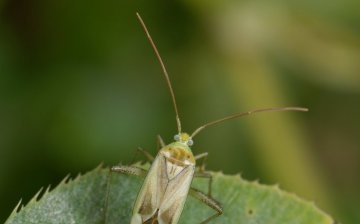
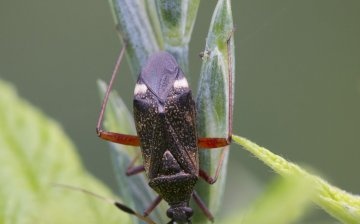
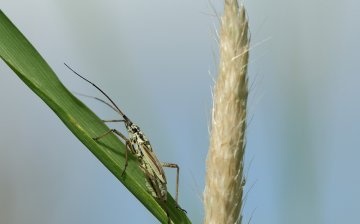

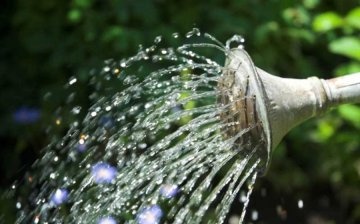






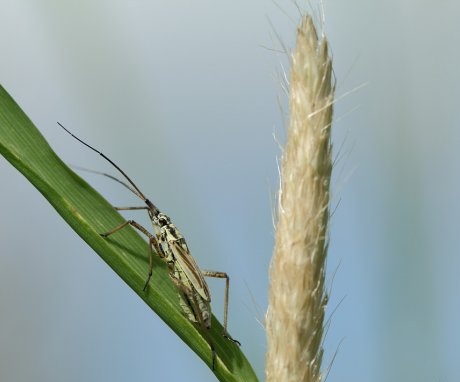
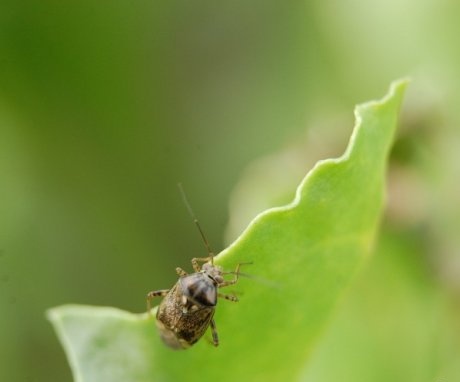
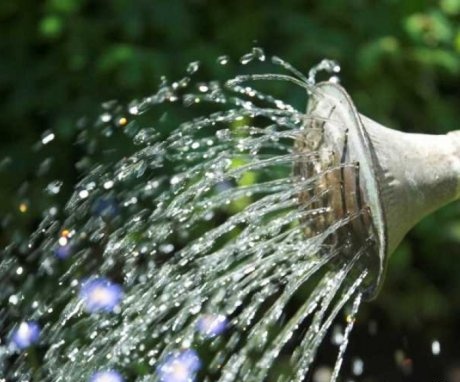
For example, what kind of chemicals can be used to fight this pest? I would very much like to see the names of the drugs, because it is very difficult for a beginner to understand the large assortment of what is offered.